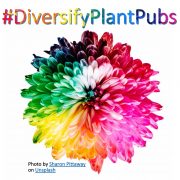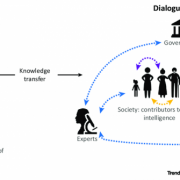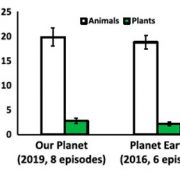Communicating Science in the Age of Fake News: Broadening Your Impact
ICAR2018 Workshop on Public Engagement, June 28, 2018
Communicating Science in the Age of Fake News: Broadening Your Impact
ICAR2018 Workshop on Public Engagement, June 28, 2018
Background
As part of an NSF-funded Research Coordination Network grant, the North American Arabidopsis Steering Committee (NAASC) has organized workshops at the last four International Conferences on Arabidopsis Research (ICAR2015-ICAR2018). The focus of each workshop has been different for each conference. For ICAR2018, the focus was on how we, as plant scientists, can more effectively engage with the public to increase awareness of plant science, and more generally, to promote a better understanding of the scientific process and the need for evidence-based decision making. The primary goals of the workshop were to:
- share state-of-the- art information on best practices for promoting public engagement with plant science
- enable conversations amongst participants that will lead to implementation of novel ideas and approaches to public engagement
Structure of the Workshop
Four presenters with a proven track record in public outreach in plant biology were invited to lead off the workshop (see below). Following a brief introduction on workshop objectives (~3 minutes), each presenter was asked to give an 8-10-minute overview of their public science engagement activities, highlighting approaches that have proved effective, the challenges they encountered, and pitfalls to avoid. They were also asked to discuss how they assessed the impact of their outreach efforts. The presenters were selected to cover a diverse set of public engagement activities (e.g. hands-on activities at public gatherings, YouTube videos, educational modules for schools, social media, etc.). At the conclusion of the presentations, participants broke into small groups of 6-10 people, with each being led by one of the presenters or workshop organizers. Each group was provided with markers and a large flip chart and was asked to discuss their experiences with public outreach, including successes, failures, and challenges, with one person acting as a recorder. After ~20 minutes of internal discussion, each group reported out to the larger group two or three success stories, and notable challenges. The reporting/sharing phase lasted about 15 minutes, with the total workshop time being 90 minutes.
Presenters

Ottoline Leyser, Sainsbury Laboratory Cambridge University, Cambridge, UK
Ottoline is a Professor of Plant Development at the University of Cambridge and Director of the Sainsbury Laboratory, Cambridge University. Her primary research focus has been on how plant architecture is determined, with an emphasis on how auxin regulates this process. As Director of SLCU, she has been active in organizing its outreach activities, and has been an active participant, both in bringing science activities to schools and public gatherings, and in speaking on the underlying sociological drivers of public distrust of science and scientists. For example, see this recording of her presentation at the Huxley Summit in December 2017.

Peter van Esse, 2Blades Foundation, The Sainsbury Laboratory, Norwich, UK
Peter is a research group leader for the non-profit 2Blades Foundation, with his research group embedded within The Sainsbury Laboratory at the John Innes Centre in Norwich. The mission of the 2Blades Foundation is to discover, advance, and deliver genetic improvements in crop disease resistance, with a focus on improving food security in developing countries. Peter’s laboratory has been identifying naturally occurring disease resistance genes that confer resistance to rust fungi, with a near term goal of conferring resistance to Asian Soybean Rust and Wheat Stem Rust. The 2Blades Foundation has effectively exploited Twitter and other social media outlets to promote awareness of the challenges presented by plant diseases, and the power of genetics to address these challenges. In addition, they have created a series of infographics and videos to help explain these issues to the public.

Anna Stepanova, North Carolina State University, Department of Plant and Microbial Biology, Raleigh, NC, USA.
Anna and her husband, Jose Alonso, are faculty members at NC State and jointly run a laboratory investigating how the plant hormones auxin and ethylene function to integrate environmental and developmental signals to regulate root growth. As part of their outreach efforts, Anna and Jose have developed a set of bilingual (English and Spanish) experimental modules in plant biology called plants4kids.org. Since 2011, lab members have conducted monthly hands-on demonstrations at the North Carolina Museum of Natural Sciences and at local elementary schools. Currently, their Plants4Kids program consists of 14 experimental modules designed specifically for young children (ages 5 to 12). To target older students (middle school and high school), they have been making short educational YouTube videos that explain fundamental concepts in plant biology and beyond. See https://plantae.org/plants4kids/ for Anna’s blog on these activities.

Karen Sims-Huopaniemi, University of Helsinki, Finland.
Karen wears multiple hats, including Coordinator of the Viikki Plant Science Centre (ViPS) in Helsinki, Coordinator of multiple Doctoral Programs at the University of Helsinki, and National Director of the Fascination of Plants Day for Finland. In this latter role, Karen helped develop a nationwide video contestfocused on plants and humans, along with interactive workshops with science teachers on using hands-on experiments in the classroom.
Workshop Outcomes
Each of the presenters have kindly made their presentations from the workshop available here (Leyser, van Esse, Stepanova, Sims-Huopaniemi), but brief summaries are provided below.
Ottoline discussed the necessity of breaking down communication barriers between scientists and lay people. In particular, the need to overcome “in group” versus “out group” thinking for BOTH the scientific community and the general public. Such thinking leads to in group favoritism, out group derogation, in group social influence, out group homogenization, and worst of all, polarization between groups. The reward of “in group” thinking is that it reduces insecurity and fear of the unknown, and reinforces one’s beliefs. So how do scientists overcome such behavior? First of all, we must acknowledge that science is simply a method of finding things out and problem solving, and that ANYONE is capable of using this method, and in fact, almost everyone uses the scientific process in their everyday lives. One does NOT need to be superhumanly clever to apply the scientific process. Second, we need to acknowledge that the scientific process requires creativity and experimentation, and that most of the time, our experiments fail. Robots do not make good scientists. Failure is an essential part of the scientific process. Science is not a unidirectional march to the “truth”. Communicating to the public that science is more about the process than the resulting “facts” is a must, as is giving the public of all ages opportunities to engage in the scientific process with fun activities. An additional goal of outreach activities is to communicate that scientists are just normal people and we share many of the same goals and desires as everyone else, including a safe and abundant food supply. By getting out of the lab and interacting with students in schools and the general public, it gives them a chance to interact with scientists on a personal level.
Anna presented an overview of her group’s efforts to bring hands-on plant science activities to students from 3 years old to 18 years old. The earlier we get children involved in age-appropriate science activities, the greater is the chance we can get them excited about research. But what science activities are appropriate for different age groups? Anna has been addressing this question, in part, by experimenting with her own children. As kids age, the complexity of the activities can be increased. This in- home experimenting has given rise to a suite of bi-lingual hands-on activities that can be accessed through their website plants4kids.org. Lab members bring these activities to the museum of Natural Sciences every 1st Sat of the month, and to classrooms and science fairs upon request. Materials for these activities are inexpensive and easily accessible. Each activity includes a question or questions to be addressed, protocols, expected results, and follow-up ideas for additional experiments that participants can pursue at home with their families. Anna then showed multiple examples of the experiments that have been pursued, such as the effect of gravity and light on plant growth.
With the realization of how much time teenagers spend on their smartphones and laptops, Anna’s group also began creating YouTube videos to help explain complex topics in plant biology such as hormone signaling, GMOs, and gene expression. They also engage students in creating their own videos, as video-making is a great summer-break project for children (kids get to learn science and acquire video making & editing skills). Currently, she is also developing a library of basic lab equipment that would enable NC teachers to perform basic molecular biology experiments in their classrooms. All of these activities are funded through broader impact components of grants from the U.S. National Science Foundation.
Karen presented an overview of her activities associated with Fascination of Plants Day from 2012-2017. One challenge that she faced was that of language. Over 50% of the researchers at the University of Helsinki do not speak Finnish, a language that is off on its own branch of the language tree. It is thus quite challenging for these researchers to communicate plant science to the general public. However, with the help of several Finnish colleagues, whose translation skills were truly put to the test, Fascination of Plants successfully organized a multitude of events for the public each year from 2012. Most successful have been photography competitions with hundreds of entries received each year. A panel of experts select the best 25 and these entries have been exhibited in various locations throughout Helsinki with members of the public voting for their favorite. Other events have utilized the University botanic gardens country-wide with themed open days, public lectures, guided tours and discussion forums. Raising awareness and interest in plant science from an early age through the school network from day-care to high school has been an important task. Over the past few years, interactive workshops with science teachers have highlighted the interest in hands-on experiments in the classroom. A package of experiments, quizzes and puzzles developed at the University of Helsinki by doctoral students and other plant scientists is now regularly used at primary and secondary schools throughout Finland.
Peter presented an overview of the mission of the 2Blades Foundation and how they approach public outreach. He started by emphasizing the challenge that humanity faces in the coming decades with regards to feeding our growing population. This is a point that the public is only marginally aware of, and can be a starting point for many discussions on plant biology. His presentation illustrated effective use of images, rather than text, to make important points, such as the goal of producing more food with less inputs and less impact on planet health. 2Blades views its role as primarily to bridge the gap between discovery in academic labs to application in farmer’s fields, especially farmers in developing countries. This includes assistance with conducting field trials, obtaining regulatory approvals, and finding industry and foundation partners to bring a product to market. They have also set up a partnership with Biosciences in Eastern and Central Africa -International Livestock Research Institute (BecA-ILRA), which operates a research station in Nairobi, Kenya, to facilitate technology transfer
To get their message out, 2Blades relies on a combination of Infographics, Newsletters, and Twitter (@2Blades). The primary challenge they face is increasing their audience. Currently, 2Blades has ~1500 followers. Addressing this challenge requires embracing speaking and networking opportunities, especially outside the normal bubble of plant science meetings. Peter shared several tips on how to maximize the impact of tweets: Include a photo, make it easily understandable (no inside jokes), create content that is valuable to your followers, keep tweets short, engage with others through mentions and retweets, don’t be afraid to recycle content, tweet when most of your followers are likely to be online. This can be done using a service such as Hootsuite. Pitfalls to avoid: being negative, using jargon, being bombastic (don’t beat people up with science), being dismissive (it’s important to acknowledge other’s concerns).
More generally, Peter emphasized the importance of connecting with your audience on a personal level. Take homes from this part of the presentation included that any conversation with non-scientists (or presentation) should start with telling people WHY you do your research. If they understand why you do your research, they will be much more receptive to the WHAT of your research. If people do not trust you, then science does not matter.
Audience Participation
Following the formal presentations, we divided the workshop participants up into five groups, each lead by one of the presenters or the moderator (Roger Innes) and asked the groups to discuss their own experiences with public outreach, sharing what worked well, and what did not, with a general goal of coming up with a list of “do’s” and “don’ts” that could be written on a flipchart to later share with the entire room. Groups also discussed challenges they encountered in conducting outreach. Approximately 50 people participated in this part of the workshop, leading to very lively discussion that had to be cut off after about 20 minutes. The image above shows one group’s flipchart. Below is a list of the key points that came out of this discussion.
| Outreach Do’s | Outreach Don’ts |
| Know you audience, find common ground, listen to their concerns and acknowledge them. | Use jargon and technical language |
| Use culturally relevant examples | Assume your audience is ignorant |
| Be enthusiastic about your topic | Pretend you know ALL of the answers |
| Be human (admit concerns and mistakes) | Start with a lecture or use canned presentations |
| Use hands on activities and lots of visual aids | Describe yourself as a “molecular biologist”. Instead, “I’m trying to understand how plants fight disease”. |
| Take your science to public events and schools | Force your knowledge onto your audience (“blind them with science”). |
| Time your event to maximize attendance | Common Challenges |
| Practice (make sure activities will work) | Props often break |
| Sit with kids (get down to their level) | Time commitment is too much |
| Use analogies and simple language | Convincing your PI that this is a good use of your time |
| Share photos of plants on Instagram, and embedded in Twitter messages | Keeping hands-on activities simple, yet informative and engaging |
| Tell a story (use a hook to draw your audience in) | Kids have short attention spans |
| Try new things. You never know what will grab someone’s interest. | Plants are perceived as boring (compared to animals) |
| Encourage questions. If you don’t know the answer, help them find the answer. | Distrust of plant scientists by audience members |
| Strike up conversations with strangers about why you do what you do (over a beer at a bar! In an airplane!) | Overcoming mis-information on the internet |
| Practice your “elevator speech” describing your project in simple terms. Mention applications that your audience can relate to. | |
| Have “open houses” that bring the public to your research center. Host greenhouse tours. Participate in “bring your kid to work days” (encourage staff to do so) | |
| On social media, build your network by frequently reposting interesting information, then leverage that network by encouraging followers to repost your news. | |
| Use exotic fruits in hands-on activities | |
| Reach out to interest groups such as gardening clubs. | |
| Publicize your event! | |
| Engage with journalists and your institution’s publicity office. Get your event covered by your local newspaper. | |
| Connect with teachers. Ask for feedback from teachers following teacher workshops and school outreach events. | |
| Connect to arts and humanities | |
| Make a Podcast |
This discussion generated a lot of energy among the participants, and many commented that they left the workshop with new ideas for how to approach their future outreach activities.










Leave a Reply
Want to join the discussion?Feel free to contribute!